.
![Untitled | by Md Enamul Kabir]()
![Untitled | by Md Enamul Kabir]()
![#8 | by Md Enamul Kabir]()
![#8 | by Md Enamul Kabir]()
![#8 | by Md Enamul Kabir]()
#8 | Dhaka, Bangladesh: photo by Md. Enamul Kabir, 15 June 2017
![Untitled | by Md Enamul Kabir]()
![Untitled | by Md Enamul Kabir]()
![#13 | by Md Enamul Kabir]()
#13 | Dhaka, Bangladesh: photo by Md. Enamul Kabir, 14 August 2017
![#13 | by Md Enamul Kabir]()
#13 | Dhaka, Bangladesh: photo by Md. Enamul Kabir, 14 August 2017
![#13 | by Md Enamul Kabir]()
#13 | Dhaka, Bangladesh: photo by Md. Enamul Kabir, 14 August 2017
![Self Portrait | by Md Enamul Kabir]()
Self Portrait | Dhaka, Bangladesh: photo by Md. Enamul Kabir, 8 January 2017
![Self Portrait | by Md Enamul Kabir]()
Self Portrait | Dhaka, Bangladesh: photo by Md. Enamul Kabir, 8 January 2017
![Self Portrait | by Md Enamul Kabir]()
Self Portrait | Dhaka, Bangladesh: photo by Md. Enamul Kabir, 8 January 2017
![]()
Post 13: of dogs and dystopia @WennerGrenOrg @AmericanAnthro @drmfirdosi @Evilsickularist: image via Ather Zia @aziakashmir, 13 August 2016![]()
These dogs were abandoned in crisis-hit Venezuela: image via Reuters Pictures @reuterspictures, 7 September 2016
![]()
![]()
PHOTOS: Struggling to feed their families, some Venezuelan owners are abandoning their dogs: image via Reuters Top New @Reuters, 7 September 2016
![]()
In Venezuela, dogs lives are getting harder. Venezuelans struggling to feed their families let alone pets amid an unprecedented economic crisis are increasingly dumping scrawny animals in streets, parks and makeshift shelters. At one dilapidated sanctuary in the hills outside Caracas, hundreds of skinny dogs bark and claw through wire mesh to scavenge for food in the streets and forest nearby."The crisis has hit hard," said Maria Arteaga, 53, who began looking after stray dogs in her own home before founding the shelter in Los Teques.."People are abandoning their dogs because they can't afford food and because they're leaving the country." Venezuelans themselves are suffering shortages of food and medicines, and are finding salaries wrecked by triple-digit inflation. A 20 kilogram bag of dog food costs around $50 at the black market exchange rate, nearly double its price in the United States and out of reach for many in Venezuela where the minimum wage is $23-a-month. Enfermera (nurse), seen above, was given that name because she was rescued by a nurse outside a hospital. "She suffered a stroke and although she never recovered completely, she is a very good guard dog. She lives outside of the shelter and when someone approaches, she starts barking," said Maria Silva, who takes care of dogs at the shelter.: photo by Carlos Garcia Rawlins via Reuters PIctures @reuterspictures, 7 September 2016
![]()
Mancha (stain) was given that name because of the black spot on her face. "She has bitten almost everybody in the shelter. She was not loving, on the contrary, she fought everyone and at mealtime nobody could be near her," said Maria Silva. Mancha died the following week after the photo was taken.: photo by Carlos Garcia Rawlins via Reuters PIctures @reuterspictures, 7 September 2016
![]()
Pichurra is very old and has been at the shelter for a long time. "She is extremely calm, never fights with anyone, nor does she bark. In fact, at mealtimes the volunteers have to be very alert, because if any other dog steals her food she would not complain," said Maria Silva.: photo by Carlos Garcia Rawlins via Reuters PIctures @reuterspictures, 7 September 2016
![]()
Pintica (spotty) was given that name because of her skin. "She was the posh girl of the shelter, she didn't like to get her feet wet. All dogs used to attack her and because of that, she did not like to come out of her home," said Maria Silva. Pintica died the following week after the photo was taken.: photo by Carlos Garcia Rawlins via Reuters PIctures @reuterspictures, 7 September 2016
Best In Toy
![]()
![None]()
![None]()
![None]()
Biggie, a pug, is shown in the ring during the Toy group competition during the 142nd Westminster Kennel Club Dog Show, Monday, Feb. 12, 2018, at Madison Square Garden in New York. Biggie won best in group.: photo by Mary Altaffer/AP, 12 February 2018
![None]()
Handler Esteban Farias hugs Biggie, a pug, after he won the Toy group competition during the 142nd Westminster Kennel Club Dog Show, Monday, Feb. 12, 2018, at Madison Square Garden in New York. Biggie won best in group.: photo by Mary Altaffer/AP, 13 February 2018
![None]()
Esteban Farias waves the blue ribbon after Biggie, a pug, wins best in Toy group during the 142nd Westminster Kennel Club Dog Show, Monday, Feb. 12, 2018, at Madison Square Garden in New York. Biggie won best in group.: photo by Mary Altaffer/AP, 13 February 2018 ![None]()
Lucy, a borzoi, is shown in the ring during the Hound group competition during the 142nd Westminster Kennel Club Dog Show, Monday, Feb. 12, 2018, at Madison Square Garden in New York. Lucy won best in group.: photo by Mary Altaffer/AP, 12 February 2018
![None]()
Lucy, a borzoi, is shown in the ring by her handler Valerie Nunes-Atkinson during the Hound group competition during the 142nd Westminster Kennel Club Dog Show, Monday, Feb. 12, 2018, at Madison Square Garden in New York. Lucy won best in group.: photo by Mary Altaffer/AP, 12 February 2018
![]()
![]()
Canine competitors assemble on the first day of judging at the #WestminsterDogShow Photo @drewangerer: image via Getty Images News, 12 February 2018
![]()
Pooches Get Pampered: Almost 3,000 dogs from all 50 states made an appearance at the 142nd Westminster Dog Show in New York City on Monday. Photo Timothy A. Clary: image viaGetty Images @GettyImages, 12 February 2018
![]()
Canine competitors assemble on the first day of judging at the #WestminsterDogShow Photo @drewangerer: image via Getty Images News, 12 February 2018
![]()
Secret pep talk? Vulcan Mind Meld? Or just smoosh face kisses? #WestminsterDogShow2018 #WKCDogShow #wirehairedvizsla Photo @drewangerer: image via Getty Images News, 12 February 2018
![]()
I just screamed inordinately loudly at the joy of the Norfolk Terrier winning#WestminsterDogShow2018 #goodpups: image via Josh Friedman @yoshfriedman, 13 February 2018
![]()

Untitled | Dhaka, Bangladesh: photo by Md. Enamul Kabir, 9 April 2016


#8 | Dhaka, Bangladesh: photo by Md. Enamul Kabir, 15 June 2017

#8 | Dhaka, Bangladesh: photo by Md. Enamul Kabir, 15 June 2017

#8 | Dhaka, Bangladesh: photo by Md. Enamul Kabir, 15 June 2017

Untitled | Dhaka, Bangladesh: photo by Md. Enamul Kabir, 14 July 2017

Untitled | Dhaka, Bangladesh: photo by Md. Enamul Kabir, 14 July 2017

#13 | Dhaka, Bangladesh: photo by Md. Enamul Kabir, 14 August 2017

#13 | Dhaka, Bangladesh: photo by Md. Enamul Kabir, 14 August 2017

#13 | Dhaka, Bangladesh: photo by Md. Enamul Kabir, 14 August 2017

Self Portrait | Dhaka, Bangladesh: photo by Md. Enamul Kabir, 8 January 2017

Self Portrait | Dhaka, Bangladesh: photo by Md. Enamul Kabir, 8 January 2017

Self Portrait | Dhaka, Bangladesh: photo by Md. Enamul Kabir, 8 January 2017
Jorge Luis Borges: Un lobo

Post 13: of dogs and dystopia @WennerGrenOrg @AmericanAnthro @drmfirdosi @Evilsickularist: image via Ather Zia @aziakashmir, 13 August 2016
Jorge Luis Borges: Un lobo
Furtivo y gris en la penumbra última,
va dejando sus rastros en la margen
de este río sin nombre que ha saciado
la sed de su garganta y cuyas aguas
no repiten estrellas. Esta noche,
el lobo es una sombra que está sola
y que busca a la hembra y siente frío.
Es el último lobo de Inglaterra.
Odín y Thor lo saben. En su alta
casa de piedra un rey ha decidido
acabar con los lobos. Ya forjado
ha sido el fuerte hierro de tu muerte.
Lobo sajón, has engendrado en vano.
No basta ser cruel. Eres el último.
Mil años pasarán y un hombre viejo
te soñará en América. De nada
puede servirte ese futuro sueño.
Hoy te cercan los hombres que siguieron
por la selva los rastros que dejaste,
furtivo y gris en la penumbra última.
![None]()
va dejando sus rastros en la margen
de este río sin nombre que ha saciado
la sed de su garganta y cuyas aguas
no repiten estrellas. Esta noche,
el lobo es una sombra que está sola
y que busca a la hembra y siente frío.
Es el último lobo de Inglaterra.
Odín y Thor lo saben. En su alta
casa de piedra un rey ha decidido
acabar con los lobos. Ya forjado
ha sido el fuerte hierro de tu muerte.
Lobo sajón, has engendrado en vano.
No basta ser cruel. Eres el último.
Mil años pasarán y un hombre viejo
te soñará en América. De nada
puede servirte ese futuro sueño.
Hoy te cercan los hombres que siguieron
por la selva los rastros que dejaste,
furtivo y gris en la penumbra última.

A keeshond sits on a grooming table before competing at the Westminster Kennel Club in New York. The nation’s top dog show attracts almost 2,900 dogs to New York, where judging started on Monday, Feb. 12, 2018.: photo by Ben Walker/AP, 12 February 2018
Jorge Luis Borges: A Wolf
Grey and furtive in the final twilight,
he lopes by, leaving his spoor along the bank
of this nameless river that has quenched the thirst
of his throat, the water that repeats no stars.
Tonight, the wolf is a shade who runs alone
and searches for his mate and feels cold.
He is the last wolf in all of Angle-land.
Odin and Thor know him. In a commanding
house of stone a king has made up his mind
to put an end to wolves. The powerful
blade of your death has already been forged.
Saxon wolf, your seed has come to nothing.
To be cruel isn’t enough. You are the last.
A thousand years will pass and an old man
will dream of you in America. What use
can that future dream possibly be to you?
Tonight the men who followed through the woods
the spoor you left are closing in on you,
grey and furtive in the final twilight.
Jorge Luis Borges (1899-1986): Un Lobo (A Wolf), fromLos conjurados, 1985, English version by Robert Mezey
Grey and furtive in the final twilight,
he lopes by, leaving his spoor along the bank
of this nameless river that has quenched the thirst
of his throat, the water that repeats no stars.
Tonight, the wolf is a shade who runs alone
and searches for his mate and feels cold.
He is the last wolf in all of Angle-land.
Odin and Thor know him. In a commanding
house of stone a king has made up his mind
to put an end to wolves. The powerful
blade of your death has already been forged.
Saxon wolf, your seed has come to nothing.
To be cruel isn’t enough. You are the last.
A thousand years will pass and an old man
will dream of you in America. What use
can that future dream possibly be to you?
Tonight the men who followed through the woods
the spoor you left are closing in on you,
grey and furtive in the final twilight.
Jorge Luis Borges (1899-1986): Un Lobo (A Wolf), fromLos conjurados, 1985, English version by Robert Mezey

These dogs were abandoned in crisis-hit Venezuela: image via Reuters Pictures @reuterspictures, 7 September 2016

Struggling to feed families, crisis-hit Venezuelans are abandoning their pets: image via Reuters Pictures @ReutersPictures, 7 September 2016

PHOTOS: Struggling to feed their families, some Venezuelan owners are abandoning their dogs: image via Reuters Top New @Reuters, 7 September 2016

In Venezuela, dogs lives are getting harder. Venezuelans struggling to feed their families let alone pets amid an unprecedented economic crisis are increasingly dumping scrawny animals in streets, parks and makeshift shelters. At one dilapidated sanctuary in the hills outside Caracas, hundreds of skinny dogs bark and claw through wire mesh to scavenge for food in the streets and forest nearby."The crisis has hit hard," said Maria Arteaga, 53, who began looking after stray dogs in her own home before founding the shelter in Los Teques.."People are abandoning their dogs because they can't afford food and because they're leaving the country." Venezuelans themselves are suffering shortages of food and medicines, and are finding salaries wrecked by triple-digit inflation. A 20 kilogram bag of dog food costs around $50 at the black market exchange rate, nearly double its price in the United States and out of reach for many in Venezuela where the minimum wage is $23-a-month. Enfermera (nurse), seen above, was given that name because she was rescued by a nurse outside a hospital. "She suffered a stroke and although she never recovered completely, she is a very good guard dog. She lives outside of the shelter and when someone approaches, she starts barking," said Maria Silva, who takes care of dogs at the shelter.: photo by Carlos Garcia Rawlins via Reuters PIctures @reuterspictures, 7 September 2016

Mancha (stain) was given that name because of the black spot on her face. "She has bitten almost everybody in the shelter. She was not loving, on the contrary, she fought everyone and at mealtime nobody could be near her," said Maria Silva. Mancha died the following week after the photo was taken.: photo by Carlos Garcia Rawlins via Reuters PIctures @reuterspictures, 7 September 2016

Pichurra is very old and has been at the shelter for a long time. "She is extremely calm, never fights with anyone, nor does she bark. In fact, at mealtimes the volunteers have to be very alert, because if any other dog steals her food she would not complain," said Maria Silva.: photo by Carlos Garcia Rawlins via Reuters PIctures @reuterspictures, 7 September 2016

Pintica (spotty) was given that name because of her skin. "She was the posh girl of the shelter, she didn't like to get her feet wet. All dogs used to attack her and because of that, she did not like to come out of her home," said Maria Silva. Pintica died the following week after the photo was taken.: photo by Carlos Garcia Rawlins via Reuters PIctures @reuterspictures, 7 September 2016

The Latest: Slick show for border collie at Westminster: Photo @maltaffer: image via AP Images @AP_Images, 13 February 2018

Handler Jamie Clute shows Slick, a border collie, in the ring during the herding group competition during the 142nd Westminster Kennel Club Dog Show, Tuesday, Feb. 13, 2018, at Madison Square Garden in New York. Slick won best in the herding group.: photo by Mary Altaffer/AP, 12 February 2018

Bill McFadden shows Flynn, a bichon frise, in the ring during the non-sporting group during the 142nd Westminster Kennel Club Dog Show, Monday, Feb. 12, 2018, at Madison Square Garden in New York. Flynn won best in the non-sporting group.: photo by Mary Altaffer/AP, 12 February 2018

Biggie, a pug, is shown in the ring during the Toy group competition during the 142nd Westminster Kennel Club Dog Show, Monday, Feb. 12, 2018, at Madison Square Garden in New York. Biggie won best in group.: photo by Mary Altaffer/AP, 12 February 2018

Handler Esteban Farias hugs Biggie, a pug, after he won the Toy group competition during the 142nd Westminster Kennel Club Dog Show, Monday, Feb. 12, 2018, at Madison Square Garden in New York. Biggie won best in group.: photo by Mary Altaffer/AP, 13 February 2018
.

Esteban Farias waves the blue ribbon after Biggie, a pug, wins best in Toy group during the 142nd Westminster Kennel Club Dog Show, Monday, Feb. 12, 2018, at Madison Square Garden in New York. Biggie won best in group.: photo by Mary Altaffer/AP, 13 February 2018

Lucy, a borzoi, is shown in the ring during the Hound group competition during the 142nd Westminster Kennel Club Dog Show, Monday, Feb. 12, 2018, at Madison Square Garden in New York. Lucy won best in group.: photo by Mary Altaffer/AP, 12 February 2018

Lucy, a borzoi, is shown in the ring by her handler Valerie Nunes-Atkinson during the Hound group competition during the 142nd Westminster Kennel Club Dog Show, Monday, Feb. 12, 2018, at Madison Square Garden in New York. Lucy won best in group.: photo by Mary Altaffer/AP, 12 February 2018

Canine competitors assemble on the first day of judging at the #WestminsterDogShow Photo @drewangerer: image via Getty Images News, 12 February 2018
![]()
Canine competitors assemble on the first day of judging at the #WestminsterDogShow Photo @drewangerer: image via Getty Images News, 12 February 2018
![Pooches Get Pampered Pooches Get Pampered]()
Pooches Get Pampered: Almost 3,000 dogs from all 50 states made an appearance at the 142nd Westminster Dog Show in New York City on Monday.: photo by DrewAngerer/Getty Images, 12 February 2018

Canine competitors assemble on the first day of judging at the #WestminsterDogShow Photo @drewangerer: image via Getty Images News, 12 February 2018

Pooches Get Pampered: Almost 3,000 dogs from all 50 states made an appearance at the 142nd Westminster Dog Show in New York City on Monday.: photo by DrewAngerer/Getty Images, 12 February 2018

Canine competitors assemble on the first day of judging at the #WestminsterDogShow Photo @drewangerer: image via Getty Images News, 12 February 2018

Pooches Get Pampered: Almost 3,000 dogs from all 50 states made an appearance at the 142nd Westminster Dog Show in New York City on Monday. Photo Timothy A. Clary: image viaGetty Images @GettyImages, 12 February 2018

Canine competitors assemble on the first day of judging at the #WestminsterDogShow Photo @drewangerer: image via Getty Images News, 12 February 2018

Secret pep talk? Vulcan Mind Meld? Or just smoosh face kisses? #WestminsterDogShow2018 #WKCDogShow #wirehairedvizsla Photo @drewangerer: image via Getty Images News, 12 February 2018

I just screamed inordinately loudly at the joy of the Norfolk Terrier winning#WestminsterDogShow2018 #goodpups: image via Josh Friedman @yoshfriedman, 13 February 2018

Lucky for strategically placed flowers! Newfie at Junior handling competition at #WestminsterDogShow2018 needs a restroom break NOW!: image via Katherine Leask @katherineleask, 13 February 2018
![]()
Shaun White wins gold, I’m at the #WestminsterDogShow2018, and dogs now look like goats. Life is good. #olympicsanddogs #Bedlingtonterrier: image via Dr. Holly Hunsberger @hhunsber, 13 February 2018
![]()
@TmarTn @ChelseaKreiner Coopy and Koda r here! #westminsterdogshownyc #westminsterdogshow2018 #dogloversunite #dogloversunitewestand: image via Jeff @IntheLifeofJeff, 13 February 2018
![]()
@TmarTn @ChelseaKreiner Coopy and Koda r here! #westminsterdogshownyc #westminsterdogshow2018 #dogloversunite #dogloversunitewestand: image via Jeff @IntheLifeofJeff, 13 February 2018
![]()
@TmarTn @ChelseaKreiner Koda’s relative is misbehaving! #westminsterdogshownyc #westminsterdogshow2018 #dogloversunite #dogloversunitewestand: image via Jeff @IntheLifeofJeff, 13 February 2018
![]()
@TmarTn @ChelseaKreiner Koada just started a scuffle and is in timeout... #westminsterdogshownyc #westminsterdogshow2018 #dogloversunite #dogloversunitewestand: image via Jeff @IntheLifeofJeff, 13 February 2018
![]() @TmarTn @ChelseaKreiner Koada just started a scuffle and is in timeout... #westminsterdogshownyc #westminsterdogshow2018 #dogloversunite #dogloversunitewestand: image via Jeff @IntheLifeofJeff, 13 February 2018
@TmarTn @ChelseaKreiner Koada just started a scuffle and is in timeout... #westminsterdogshownyc #westminsterdogshow2018 #dogloversunite #dogloversunitewestand: image via Jeff @IntheLifeofJeff, 13 February 2018
![]()

Shaun White wins gold, I’m at the #WestminsterDogShow2018, and dogs now look like goats. Life is good. #olympicsanddogs #Bedlingtonterrier: image via Dr. Holly Hunsberger @hhunsber, 13 February 2018

@TmarTn @ChelseaKreiner Coopy and Koda r here! #westminsterdogshownyc #westminsterdogshow2018 #dogloversunite #dogloversunitewestand: image via Jeff @IntheLifeofJeff, 13 February 2018

@TmarTn @ChelseaKreiner Coopy and Koda r here! #westminsterdogshownyc #westminsterdogshow2018 #dogloversunite #dogloversunitewestand: image via Jeff @IntheLifeofJeff, 13 February 2018

@TmarTn @ChelseaKreiner Koda’s relative is misbehaving! #westminsterdogshownyc #westminsterdogshow2018 #dogloversunite #dogloversunitewestand: image via Jeff @IntheLifeofJeff, 13 February 2018

@TmarTn @ChelseaKreiner Koada just started a scuffle and is in timeout... #westminsterdogshownyc #westminsterdogshow2018 #dogloversunite #dogloversunitewestand: image via Jeff @IntheLifeofJeff, 13 February 2018
 @TmarTn @ChelseaKreiner Koada just started a scuffle and is in timeout... #westminsterdogshownyc #westminsterdogshow2018 #dogloversunite #dogloversunitewestand: image via Jeff @IntheLifeofJeff, 13 February 2018
@TmarTn @ChelseaKreiner Koada just started a scuffle and is in timeout... #westminsterdogshownyc #westminsterdogshow2018 #dogloversunite #dogloversunitewestand: image via Jeff @IntheLifeofJeff, 13 February 2018A dog's life

'Mad Max' violence stalks Venezuela's lawless roads: With hunger widespread amid a fifth year of economic implosion, Venezuela has seen a frightening surge in attacks on increasingly lawless roads Photo Carlos Garcia Rawlins: image via Reuters Pictures @reuterspictures, 9 February 2018
![]()
Just days earlier, trucker Humberto Aguilar said he sat terrified when hundreds of looters swarmed a convoy, carting off milk, rice and sugar from other trucks but leaving his less-prized vegetables alone Photo Carlos Garcia Rawlins: image via Reuters Pictures @reuterspictures, 9 February 2018
![]()
Sometimes gunmen on motorbikes surround a truck, slowing it down before pouncing, or attackers wait for a vehicle to slow down before jumping on and hurling goods onto the ground: image via Reuters Pictures @reuterspictures, 9 February 2018
![]()
Truckers say assailants are often more akin to Robin Hood than Mad Max - they don’t harm drivers or their vehicles provided they do not resist. 'The best protection is to be submissive, hand things over ... When people are hungry, they are dangerous' Photo Carlos Garcia Rawlins: image via Reuters Pictures @reuterspictures, 9 February 2018
![]()
![]()
![File:Pisanello - Codex Vallardi 2430.jpg]()
Head of a Greyhound, right profile: Antonio Puccio Pisano (Pisanello) (c. 1395-c.1455), 15th c. (Musée du Louvre, Paris)
With me was Febo, my dog Febo, whom I had picked up, dying of hunger, on the beach at Marina Corte, on the island of Lipari. I had tended him, reared him, brought him up in my lonely house on Lipari, and he had been my sole companion during my years of exile on that sad island, which is so dear to my heart.
![photo]()
Vulcano and Lipari, Aeolian islands, at sunset; seaview from Milazzo: photo by Carmen Privitera, 1 January 2009
![File:Filicudi from ENE, 'Scolgio della Fortuna' and 'Faraglione La Canna' rocks, Alicudi (Eolian Islands).jpg]()
Filicudi ("Scolgio della Fortuna") and Alicudi ("Faraglione La Canna"), Aeolian Islands, Italy, North of Sicily: photo by Wolfgang H. Wödere, 2006
![File:Pisanello - Codex Vallardi 2433.jpg]()
Standing Greyhound, right profile: Antonio Puccio Pisano (Pisanello) (c. 1395-c.1455), 15th c. (Musée du Louvre, Paris)
Pumice mine on the island of Lipari, west of the town of Acquacalda: photo by Herandar, 2005
![File:Gran Cratere e Lipari.JPG]()
Islands in Aeolian archipelago: in foreground the Gran Cratere on Vulcano Island, in middleground the Vulcanello, in background Lípari: photo by Man77, 2006
Curzio Malaparte (Kurt Erich Suckert) (1896-1957): from La Pelle (The Skin), 1949; English version by David Moore, 1952
![Felixstowe, England | by Alison Adcock]()
Felixstowe, England: photo by Alison Adcock, 4 March 2017
![Felixstowe, England | by Alison Adcock]()

Just days earlier, trucker Humberto Aguilar said he sat terrified when hundreds of looters swarmed a convoy, carting off milk, rice and sugar from other trucks but leaving his less-prized vegetables alone Photo Carlos Garcia Rawlins: image via Reuters Pictures @reuterspictures, 9 February 2018

Sometimes gunmen on motorbikes surround a truck, slowing it down before pouncing, or attackers wait for a vehicle to slow down before jumping on and hurling goods onto the ground: image via Reuters Pictures @reuterspictures, 9 February 2018

Truckers say assailants are often more akin to Robin Hood than Mad Max - they don’t harm drivers or their vehicles provided they do not resist. 'The best protection is to be submissive, hand things over ... When people are hungry, they are dangerous' Photo Carlos Garcia Rawlins: image via Reuters Pictures @reuterspictures, 9 February 2018

The dystopian attacks in a country with one of the world's highest murder rates are pushing up transport and food costs in an already hyperinflationary environment Photo Carlos Garcia Rawlins: image via Reuters Pictures @reuterspictures, 9 February 2018

'The government gives us no security. It's madness ... But if we stop, how do we earn a living for our families? How do Venezuelans eat? And how do the peasant farmers sell their produce? We have no choice but to keep going': image via Reuters Pictures @reuterspictures, 9 February 2018
Curzio Malaparte: An Aeolian Greyhound

Head of a Greyhound, right profile: Antonio Puccio Pisano (Pisanello) (c. 1395-c.1455), 15th c. (Musée du Louvre, Paris)
During the winter of 1940 I had sought refuge in a deserted house, situated at the end of one of the most beautiful and most deserted streets in the exquisitely beautiful, deserted city of Pisa. I had done so in order to escape from the war and from men, and to cure myself of that loathsome malady to which war exposes the human heart.
With me was Febo, my dog Febo, whom I had picked up, dying of hunger, on the beach at Marina Corte, on the island of Lipari. I had tended him, reared him, brought him up in my lonely house on Lipari, and he had been my sole companion during my years of exile on that sad island, which is so dear to my heart.

Vulcano and Lipari, Aeolian islands, at sunset; seaview from Milazzo: photo by Carmen Privitera, 1 January 2009
I have never loved a woman, a brother, a friend, so much as I loved Febo. There was an affinity between us. It was in his honor that I wrote the tender pages of Un cane come me. He was a noble creature, the noblest I have ever come across in my life. He belonged to that breed of greyhounds -- a rare and delicate breed today -- which came long ago from the shores of Asia with the first Ionic immigrants, and which are known to the shepherds of Lipari as cerneghi.

Filicudi ("Scolgio della Fortuna") and Alicudi ("Faraglione La Canna"), Aeolian Islands, Italy, North of Sicily: photo by Wolfgang H. Wödere, 2006
His coat was the color of the moon, between pink and gold; it was the color of moonlight on the sea, the color of moonlight on the dark leaves of lemon and orange trees, on the scales of the dead fish which the sea used to throw up on the shore outside the door of my house after a storm. He was the color of the moonlight on the Grecian sea that laps the shores of Lipari, the color of moonlight in the poetry of the Odyssey, the color of the moonlight on that wild Liparian sea which Ulysses sailed in the course of his voyage to the lonely shore of the realm of Aeolus, ruler of the winds. He was of a pale color, like the moon just before dawn. I used to call him Caneluna.
He never strayed so much as a yard from my side. He followed me like a dog. He followed me, I say, like a dog. There was something wonderful about his presence in my wretched house on Lipari, a house lashed without respite by the wind and the sea. At night the darkness of my bare room was lit by the bright warmth of his moon-eyes. His eyes were pale blue, the color of the sea when the moon sets. I was conscious of his presence, as one is conscious of the presence of a shadow, of one's own shadow. He was, as it were, the mirror of my soul. His mere presence helped me to acquire that contempt for mankind on which the serenity and wisdom of a human being primarily depend. I felt that he resembled me, that he was in truth the very image of my conscience, of my secret life -- a portrait of myself, of all that is deepest, most intimate and most characteristic in me. I felt that he was my subconscious and, so to say, my ghost.

Standing Greyhound, right profile: Antonio Puccio Pisano (Pisanello) (c. 1395-c.1455), 15th c. (Musée du Louvre, Paris)
From him, far more than from men, with their culture and their vanity, I learned that virtue is its own reward, that it is an end in itself, and that it does not even aspire to save the world (not even that!), but only to invent every new justification for its disinterestedness and its liberty of action. The relationship of a man and a dog is always a relationship of two free spirits, of two forms of dignity, of two types of virtue each of which is its own reward. It is the most disinterested and the most romantic of relationships, one of those relationships which death illuminates with its own radiance -- a radiance tinged with the color of the pale moon that hangs above the sea at dawn, when the sky is green.
Pumice mine on the island of Lipari, west of the town of Acquacalda: photo by Herandar, 2005
I saw reproduced in him my most mysterious impulses, my doubts, my fears, my hopes. The dignity of his attitude toward mankind was mine, the courage and pride of his attitude to life were mine, his contempt for the fickle passions of men was mine. But he was more sensitive than I to the obscure portents of nature and to the invisible presence of death, which ever lurks about us, silent and suspicious. He sensed the approach of the sad spirits that haunt our dreams as they come from afar through the night air, like dead insects that are borne on the wind, none knows whence. And on some nights, as he lay curled up at my feet in my bare room on Lipari, he followed with his eyes an obscure phantasm as it hovered around me, advancing and receding, and lingering long hours watching me through the windowpane. Every so often, if the mysterious presence came so close that it brushed my forehead, Febo would snarl menacingly, the hair on his back would bristle; and I would hear a mournful cry receding into the night, and gradually dying away.
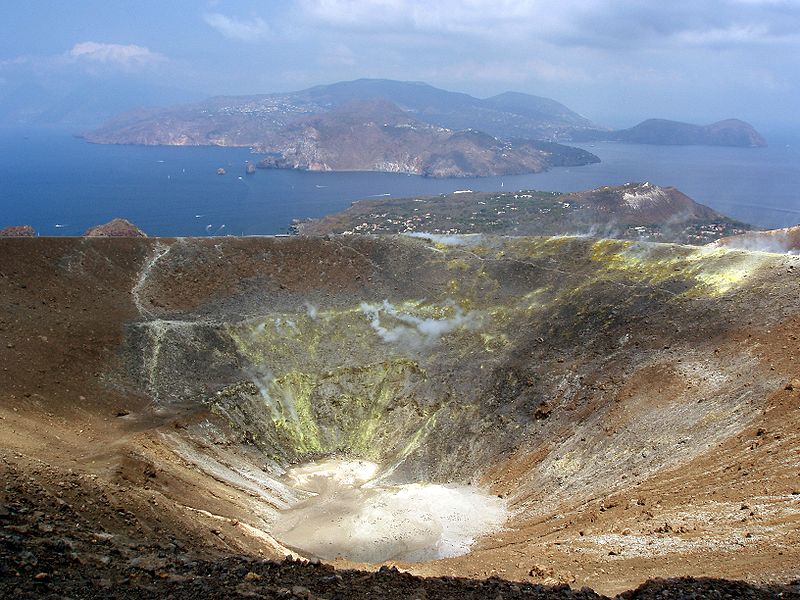
Islands in Aeolian archipelago: in foreground the Gran Cratere on Vulcano Island, in middleground the Vulcanello, in background Lípari: photo by Man77, 2006
He was the dearest of brothers to me, a true brother, one who betrays not, nor humiliates. He was a loving, a helping, an understanding, a forgiving brother. Only the man who has suffered long years of exile on a desert island, and who, on his return to the haunts of men, finds himself shunned and avoided as if he were a leper by all those who one day, when the tyrant is dead, will pose as the heroes of freedom -- only he knows what a dog can mean to a human being. Often Febo would gaze at me with a sad, noble expression of reproach in his loving eyes. At such times my sadness made me feel strangely ashamed, almost remorseful, and I was conscious as I faced him of a kind of heightened moral susceptibility. I felt that at those moments Febo despised me. True, he grieved for me, he was tender and loving; yet his eyes certainly held a suggestion of pity and, simultaneously, of contempt. He was not only my brother, but my judge. He was the guardian of my dignity, and at the same time, to use the expression of the old Greeks, he was my δορυφσρημα.
He was a sad dog, with grave eyes.Every evening we used to spend long hours on the high windswept threshold of my house, looking at the sea. Ah! the Grecian sea of Sicily, ah! the red crags of Scylla, yonder, facing Charybdis. and the snow-capped peak of Aspromonte, and the white shoulder of Etna, the Olympus of Sicily! Truly, as Theocritus sings, life offers no more beautiful experience than to contemplate the Sicilian sea from a vantage point on the shore. We used to see the shepherds' fires flaring up on the mountain, and the boats sailing forth into the deep to meet the moon; we used to hear the mournful wail of the sea shells, through which the fishermen call to one another over the water, receding into the silvery moonlit haze. We used to see the moon rising over the crags of Scylla, and Stromboli, the high, inaccessible volcano that stands in the middle of the sea, blazing like a solitary pyre within the deep blue forest of the night. We used to look at the sea, inhaling the pungent salt air, and the strong, intoxicating perfume of the olive groves, and the smell of goats' milk and of juniper branches burning in the hearths, and that warm, heavy scent of women which pervades the Sicilian night when the first stars climb wanly above the horizon.
Then one day I was taken with handcuffs on my wrists from Lipari to another island, and from there, after long months, to Tuscany. Febo followed me at a distance, hiding among the casks of anchovies and the coils of rope on the deck of the Santa Marina, the little steamer which crosses every so often from Lipari to Naples, and among the hampers of fish and tomatoes on the motorboat that plies between Naples, Ischia and Ponza. With the courage that is peculiar to cowards -- it is the only positive claim that slaves have to share the privileges of the free -- the people stopped to look at me with reproving, contemptuous expressions, hurling insults at me though clenched teeth. Only the lepers who lay in the sun on the beaches in Naples harbor smiled at me surreptitiously, spitting on the ground between the shoes of the carabinieri. I looked now and again to see if Febo was following me, and I saw him walking with his tail between his legs, hugging the walls, through the streets of Naples, from the Immacolatella to the Molo Beverello, a wonderfully sad look in his bright eyes.
...When, a few months later, I was transferred to Lucca, I was shut up in the prison, where I remained for many weeks. And when I came out, escorted by my guards, to my new place of banishment, Febo was waiting for me outside the door to the jail. He was thin and mud-stained, and there was a horribly gentle expression in his eyes, which shone brilliantly.
Two more years my exile lasted, and for two years we lived in a little house at the heart of a wood. One room was occupied by Febo and myself, the other by the carabinieri who were my warders. At last I regained my freedom, and to me it was like going from a room without windows into a narrow room without walls. We went to live in Rome, and Febo was sad -- he seemed to be humiliated by the spectacle of my freedom. He knew that freedom is alien to humanity, that men cannot and perhaps do now know how to be free, and that in Italy and in Europe freedom is discredited no less than slavery.
He was a sad dog, with grave eyes.Every evening we used to spend long hours on the high windswept threshold of my house, looking at the sea. Ah! the Grecian sea of Sicily, ah! the red crags of Scylla, yonder, facing Charybdis. and the snow-capped peak of Aspromonte, and the white shoulder of Etna, the Olympus of Sicily! Truly, as Theocritus sings, life offers no more beautiful experience than to contemplate the Sicilian sea from a vantage point on the shore. We used to see the shepherds' fires flaring up on the mountain, and the boats sailing forth into the deep to meet the moon; we used to hear the mournful wail of the sea shells, through which the fishermen call to one another over the water, receding into the silvery moonlit haze. We used to see the moon rising over the crags of Scylla, and Stromboli, the high, inaccessible volcano that stands in the middle of the sea, blazing like a solitary pyre within the deep blue forest of the night. We used to look at the sea, inhaling the pungent salt air, and the strong, intoxicating perfume of the olive groves, and the smell of goats' milk and of juniper branches burning in the hearths, and that warm, heavy scent of women which pervades the Sicilian night when the first stars climb wanly above the horizon.
Then one day I was taken with handcuffs on my wrists from Lipari to another island, and from there, after long months, to Tuscany. Febo followed me at a distance, hiding among the casks of anchovies and the coils of rope on the deck of the Santa Marina, the little steamer which crosses every so often from Lipari to Naples, and among the hampers of fish and tomatoes on the motorboat that plies between Naples, Ischia and Ponza. With the courage that is peculiar to cowards -- it is the only positive claim that slaves have to share the privileges of the free -- the people stopped to look at me with reproving, contemptuous expressions, hurling insults at me though clenched teeth. Only the lepers who lay in the sun on the beaches in Naples harbor smiled at me surreptitiously, spitting on the ground between the shoes of the carabinieri. I looked now and again to see if Febo was following me, and I saw him walking with his tail between his legs, hugging the walls, through the streets of Naples, from the Immacolatella to the Molo Beverello, a wonderfully sad look in his bright eyes.
...When, a few months later, I was transferred to Lucca, I was shut up in the prison, where I remained for many weeks. And when I came out, escorted by my guards, to my new place of banishment, Febo was waiting for me outside the door to the jail. He was thin and mud-stained, and there was a horribly gentle expression in his eyes, which shone brilliantly.
Two more years my exile lasted, and for two years we lived in a little house at the heart of a wood. One room was occupied by Febo and myself, the other by the carabinieri who were my warders. At last I regained my freedom, and to me it was like going from a room without windows into a narrow room without walls. We went to live in Rome, and Febo was sad -- he seemed to be humiliated by the spectacle of my freedom. He knew that freedom is alien to humanity, that men cannot and perhaps do now know how to be free, and that in Italy and in Europe freedom is discredited no less than slavery.
Throughout our stay in Pisa we used to remain indoors nearly all day. Not until noon or thereabouts did we go out for our walk by the river, the fair river of Pisa, the silver Arno, strolling along the beautiful Lungarni, so light and cold... Toward evening we would go and sit on the parapet overlooking the Arno (that narrow stone parapet along which Lord Byron, in the days in which he was an exile in Pisa, used to gallop every morning on his beautiful alezan, amid the terrified shouts of the peaceful citizens). We used to watch the river as it flowed along, carrying with it in its bright career leaves blighted by the frosts of winter and mirroring the silver clouds that drift across the immemorial sky of Pisa.
Fiume Arno nella città di Pisa fotografato dal lungarno Pacinotti verso ponte Solferino: photo by William Domenichini. 2004
Febo used to spend long hours curled up at my feet, and every so often he would get up, walk over to the door and turn and look at me. I would go and open the door for him, and he would go out, coming back after an hour or two, breathless, his coat smoothed by the wind, his eyes bright from the cold winter sunshine. At night he used to lift his head and listen to the voice of the river, to the voice of the rain beating down on the river; and sometimes I would wake up, and feel his warm eyes resting gently upon me, feel his vital, affectionate presence there in the dark room, and his sadness, his desolate foreboding of death.
One day he went out and never came back. I waited for him until evening, and when night fell rushed through the streets, calling him by name...
Fiume Arno nella città di Pisa fotografato dal lungarno Pacinotti verso ponte Solferino: photo by William Domenichini. 2004
Febo used to spend long hours curled up at my feet, and every so often he would get up, walk over to the door and turn and look at me. I would go and open the door for him, and he would go out, coming back after an hour or two, breathless, his coat smoothed by the wind, his eyes bright from the cold winter sunshine. At night he used to lift his head and listen to the voice of the river, to the voice of the rain beating down on the river; and sometimes I would wake up, and feel his warm eyes resting gently upon me, feel his vital, affectionate presence there in the dark room, and his sadness, his desolate foreboding of death.
One day he went out and never came back. I waited for him until evening, and when night fell rushed through the streets, calling him by name...
Curzio Malaparte (Kurt Erich Suckert) (1896-1957): from La Pelle (The Skin), 1949; English version by David Moore, 1952

Felixstowe, England: photo by Alison Adcock, 4 March 2017


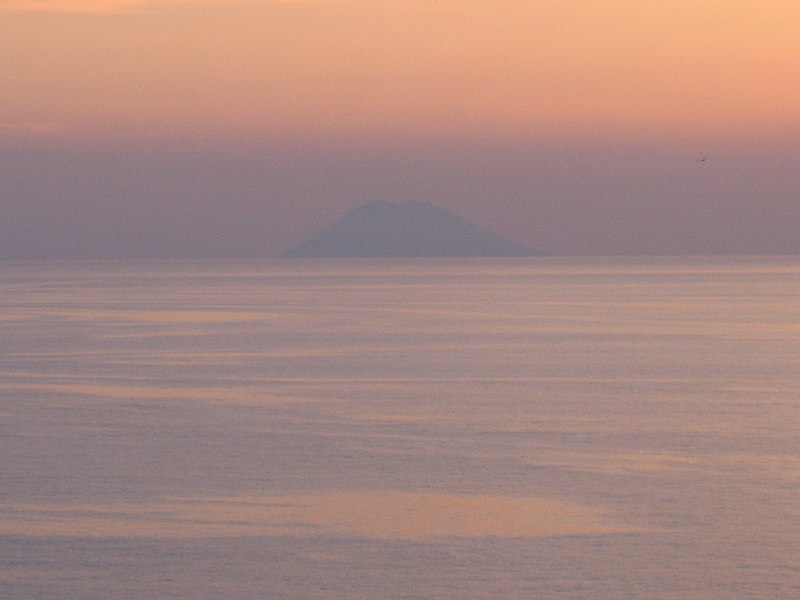
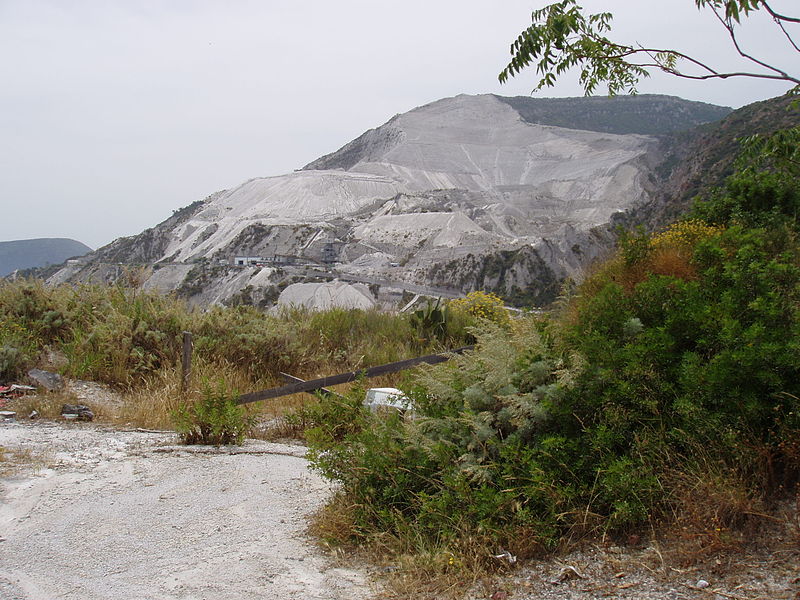
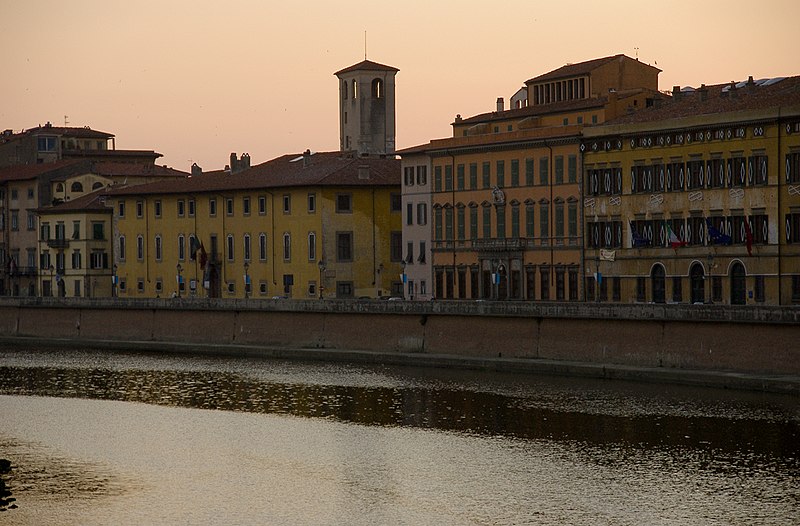



































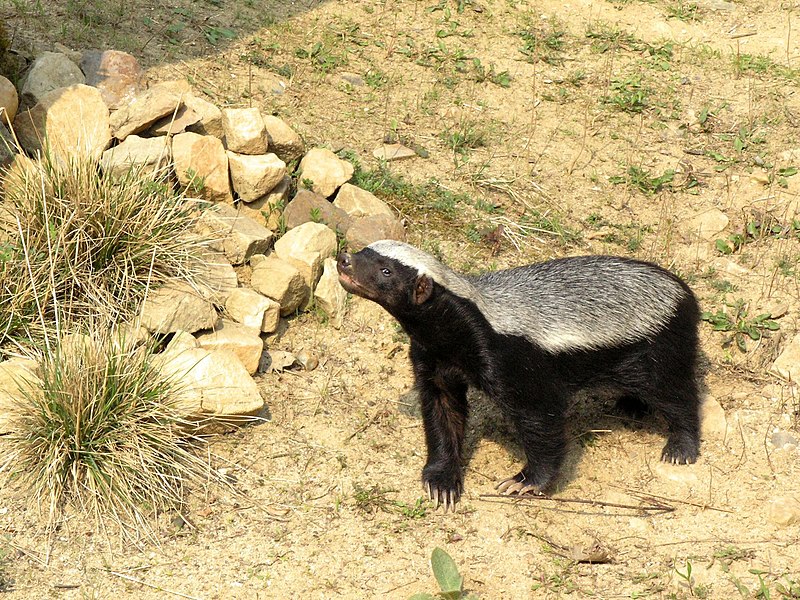



































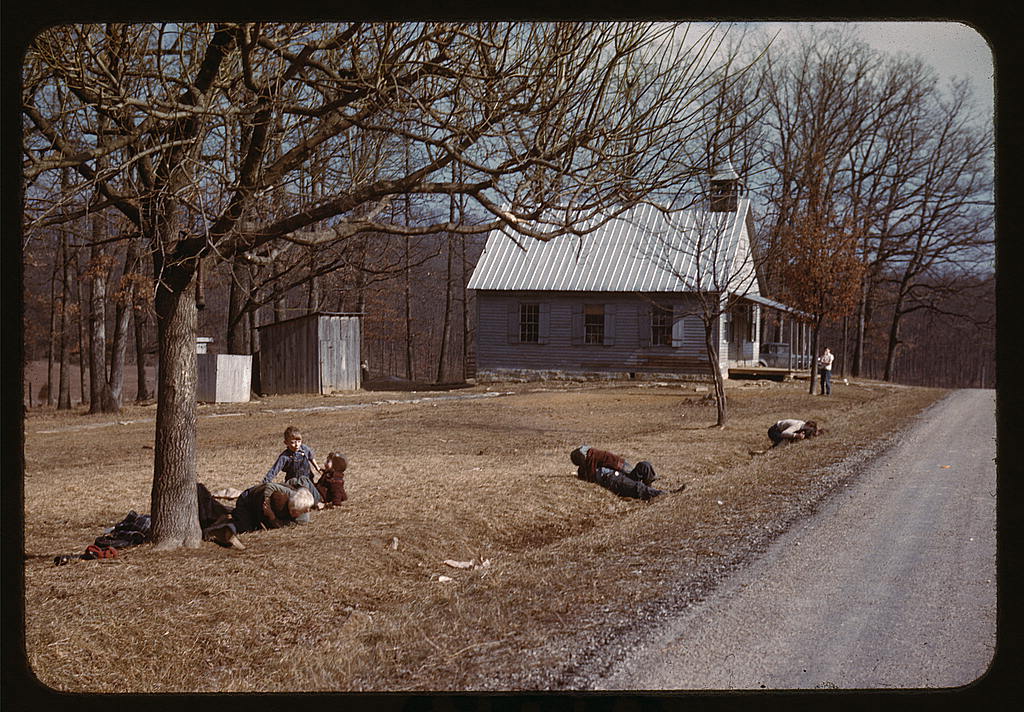



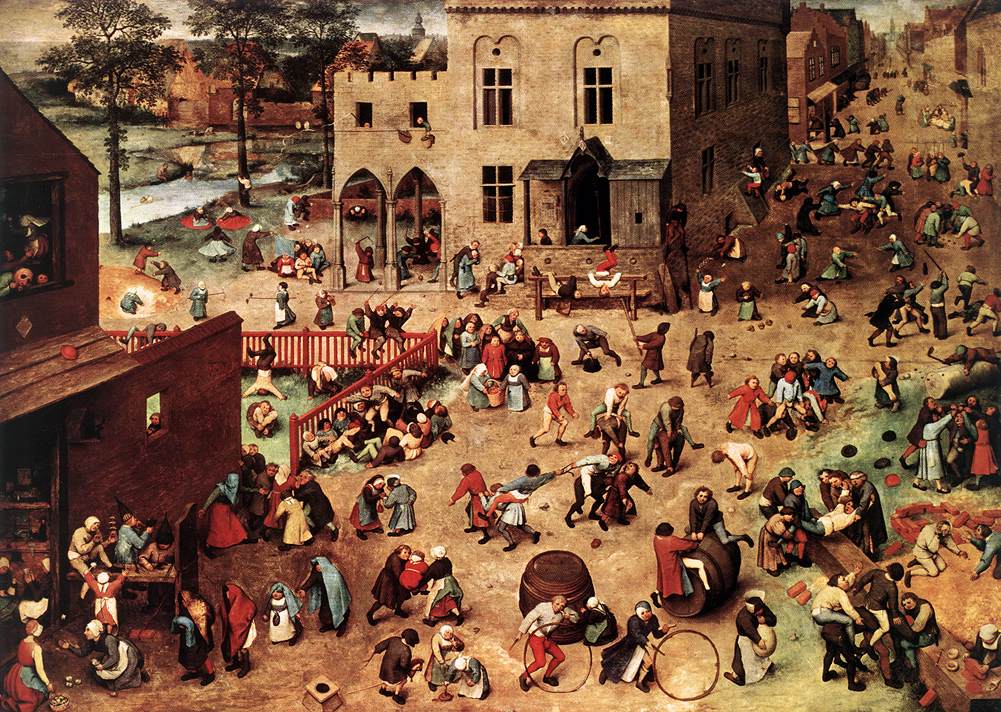















































































































































































































































































































































































































































































































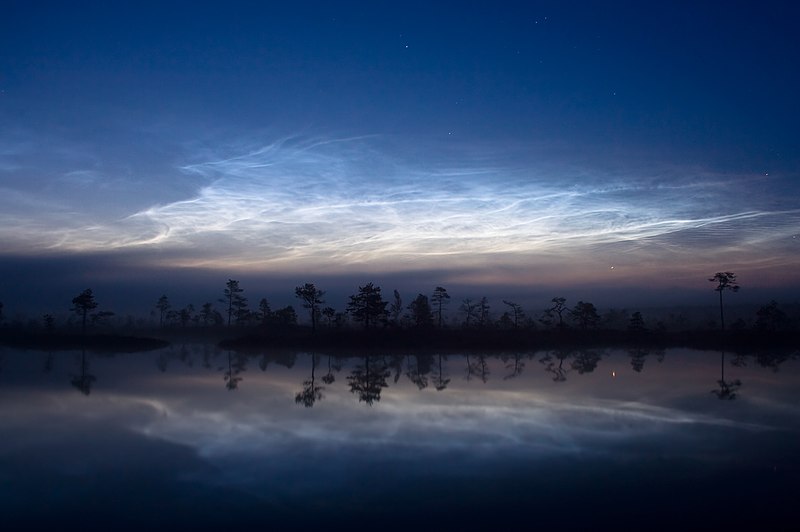






















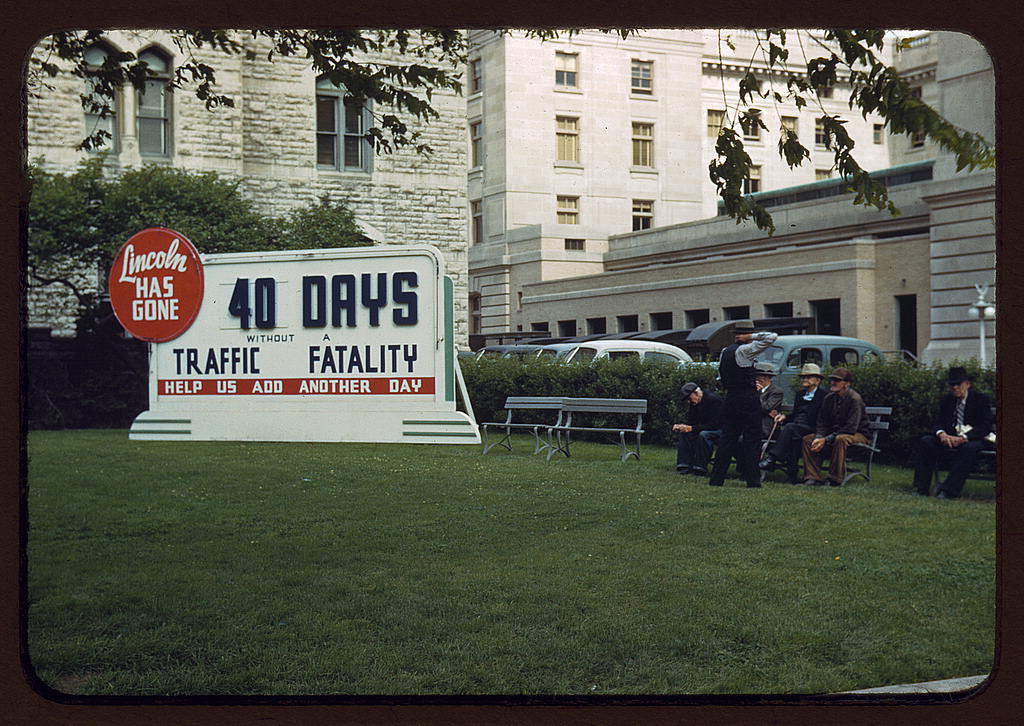
























































































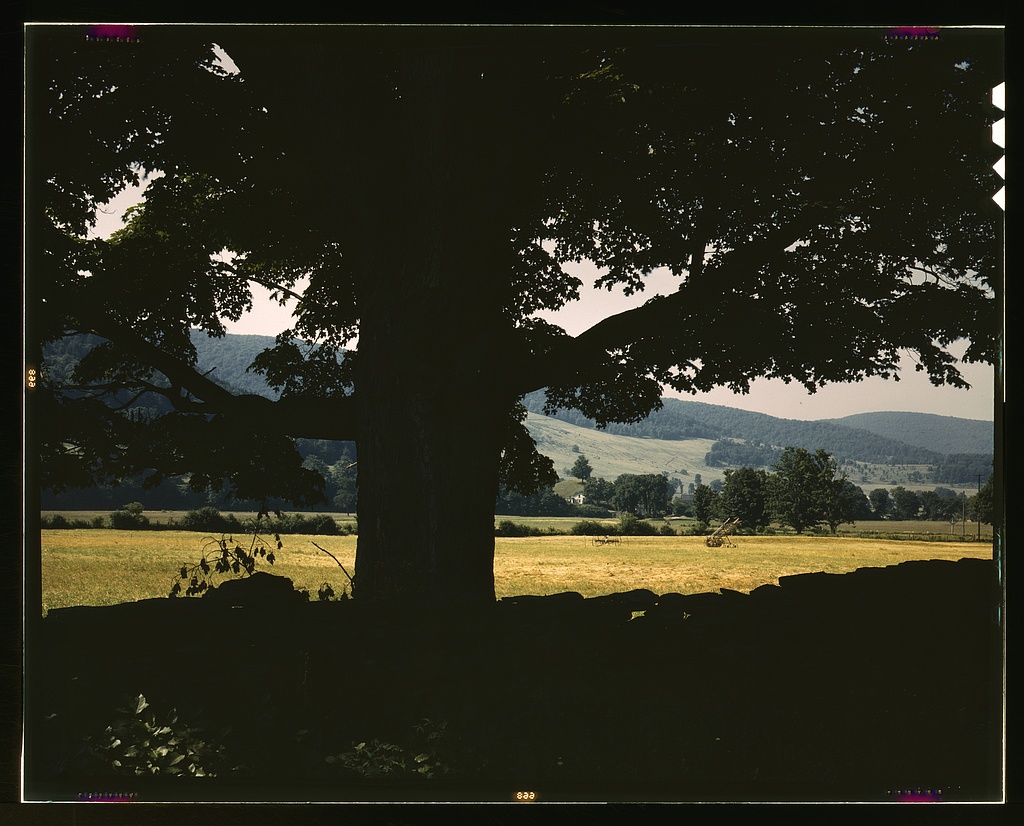




































































































































































































The re-construction of the last journey of the old Greenore train as a fund-raising event for the "People In Need Telethon" is sure to bring a nostalgic tear to many an eye, as the train makes its journey from Greenore to Dundalk to-morrow.
The train, which has been built around a car, under the watchful eye of Declan Tinnelly, will be pushed by a crew of 40 staff and regulars of the Greenore Railway Saloon, Quay Street.